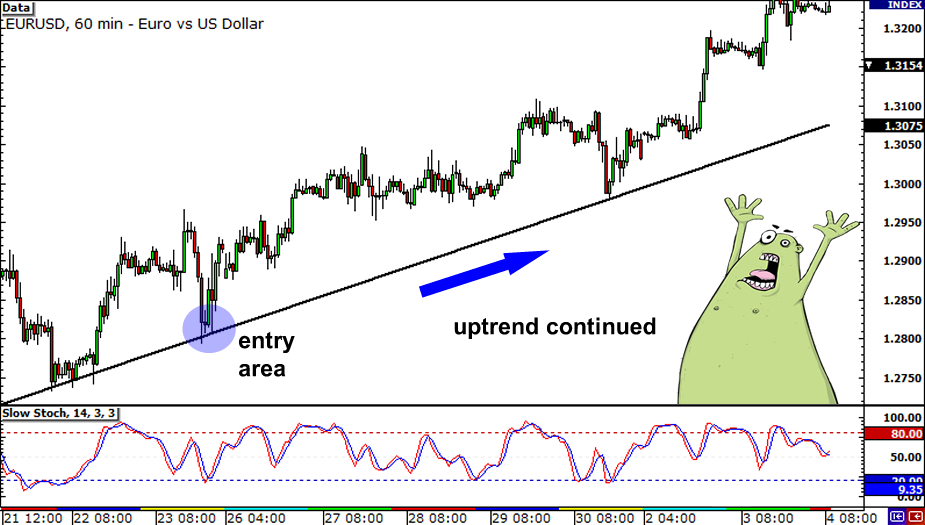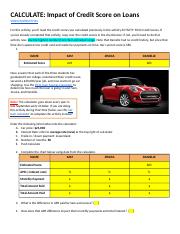
You can log in to Regions Online Banking and make purchases if you already have an account. This information will guide you through the process. This article will show you how to log into your account, get account-related notifications, change your login details, and more. This article will also cover how to use your Regions credit, debit, or prepaid card to make purchases. After enrolling in Regions Online Banking your account is accessible from any internet connected device.
Log in and create an account online for your local bank
Sign in to your Regions online account using your ID. Sign in to your Regions online banking account using your ID and password. This information will appear on any device, mobile or desktop. Contact Regions customer support if you are unsure of your ID or password. If you are a customer of a company, you can log into the site from your mobile device. You can get help from automated chat support. However, you should close your browser to log out.
You can sign up for Regions online banking here. First, create an Account. Next, choose the type you want. Next, you will need to create an Online ID and a password. Your SSN, email address, password, and PIN will be required. Also, you will need to enter the card number and pin.

Receive account-related notifications
By enrolling in Regions Online Banking, you will be able to receive account notifications via text message. You can sign up for this service to receive notifications when account activity occurs. This includes alerts when your balance drops, your overdrawn or your profile changes. You can sign up for account-related emails alerts. You can set up alerts by choosing the Alerts option from the Customer Service tab.
You can link your Regions account to other accounts such as your savings account or credit card. This allows your bank the ability to automatically transfer funds in order to cover transactions. You can select Overdraft Protection if you have an account that is insufficient. This may be cheaper than Standard Overdraft Insurance. Signing up for Regions online bank allows you to easily monitor your activity and balance through your mobile device.
Change your login details
If you have forgotten your login details to Regions Online Banking, it is easy to reset them. Log into Regions Online Banking. Next, click on the Settings tab. Then, select "Contact & Security." Scroll down to "Mailing address" and click "Change." Then, you'll be asked for confirmation of your new password. A new one will then be displayed. It only takes a couple of minutes.
Regions Online Banking allows you to change your security questions. First, log in. Click on the "Customer Service” tab. Next, click "Settings" and click on "Contact & Security." Click on "Edit" to edit the Contact & Security section. After entering the new security questions, click "Edit" to save your changes. Ensure to close your browser window during this process.

Pay with your Regions debit card, credit or prepaid card
With the Regions Now Card you can purchase at participating locations without having your card swiped. The card is easy to use and secure. You can also earn points by using the Regions Rewards Program. It has a lock to protect against fraud. You can manage the card's use via the Regions app for mobile banking or online banking. Regions Now Card offers a great solution for people who travel often and are concerned about their card security.
Regions Bank's service area has the RegionsNow Card. This card allows you to make purchases from anywhere. The Regions Bank branch can freeload cash on the Regions Now Card. ATM withdrawals also come at no cost. You can also use the Regions Now Card to make cash withdrawals at participating merchants. Regions Bank branches can also get the Regions Now Card. It charges a $4 activation fee which is more than other similar cards.
FAQ
How do I begin investing and growing my money?
You should begin by learning how to invest wisely. This way, you'll avoid losing all your hard-earned savings.
Also, learn how to grow your own food. It's not as difficult as it may seem. You can easily grow enough vegetables to feed your family with the right tools.
You don't need much space either. However, you will need plenty of sunshine. Also, try planting flowers around your house. You can easily care for them and they will add beauty to your home.
If you are looking to save money, then consider purchasing used products instead of buying new ones. Used goods usually cost less, and they often last longer too.
Is it possible for passive income to be earned without having to start a business?
Yes, it is. In fact, the majority of people who are successful today started out as entrepreneurs. Many of them owned businesses before they became well-known.
To make passive income, however, you don’t have to open a business. Instead, create products or services that are useful to others.
For example, you could write articles about topics that interest you. You can also write books. You might even be able to offer consulting services. The only requirement is that you must provide value to others.
Which investments should a beginner make?
Start investing in yourself, beginners. They must learn how to properly manage their money. Learn how you can save for retirement. Budgeting is easy. Learn how you can research stocks. Learn how to interpret financial statements. Learn how you can avoid being scammed. Make wise decisions. Learn how to diversify. Learn how to guard against inflation. Learn how you can live within your means. Learn how wisely to invest. Have fun while learning how to invest wisely. It will amaze you at the things you can do when you have control over your finances.
Can I lose my investment?
Yes, you can lose everything. There is no such thing as 100% guaranteed success. But, there are ways you can reduce your risk of losing.
One way is diversifying your portfolio. Diversification helps spread out the risk among different assets.
Stop losses is another option. Stop Losses allow you to sell shares before they go down. This will reduce your market exposure.
Margin trading is also available. Margin Trading allows the borrower to buy more stock with borrowed funds. This increases your profits.
Do I need to diversify my portfolio or not?
Many people believe diversification will be key to investment success.
In fact, many financial advisors will tell you to spread your risk across different asset classes so that no single type of security goes down too far.
However, this approach doesn't always work. Spreading your bets can help you lose more.
As an example, let's say you have $10,000 invested across three asset classes: stocks, commodities and bonds.
Imagine that the market crashes sharply and that each asset's value drops by 50%.
At this point, there is still $3500 to go. You would have $1750 if everything were in one place.
In real life, you might lose twice the money if your eggs are all in one place.
Keep things simple. You shouldn't take on too many risks.
Do I need an IRA to invest?
An Individual Retirement Account (IRA) is a retirement account that lets you save tax-free.
You can contribute after-tax dollars to IRAs, which allows you to build wealth quicker. They also give you tax breaks on any money you withdraw later.
IRAs can be particularly helpful to those who are self employed or work for small firms.
In addition, many employers offer their employees matching contributions to their own accounts. This means that you can save twice as many dollars if your employer offers a matching contribution.
Should I invest in real estate?
Real estate investments are great as they generate passive income. They do require significant upfront capital.
Real estate may not be the right choice if you want fast returns.
Instead, consider putting your money into dividend-paying stocks. These stocks pay monthly dividends and can be reinvested as a way to increase your earnings.
Statistics
- Most banks offer CDs at a return of less than 2% per year, which is not even enough to keep up with inflation. (ruleoneinvesting.com)
- Over time, the index has returned about 10 percent annually. (bankrate.com)
- 0.25% management fee $0 $500 Free career counseling plus loan discounts with a qualifying deposit Up to 1 year of free management with a qualifying deposit Get a $50 customer bonus when you fund your first taxable Investment Account (nerdwallet.com)
- If your stock drops 10% below its purchase price, you have the opportunity to sell that stock to someone else and still retain 90% of your risk capital. (investopedia.com)
External Links
How To
How to invest in stocks
Investing has become a very popular way to make a living. It's also one of the most efficient ways to generate passive income. There are many ways to make passive income, as long as you have capital. All you need to do is know where and what to look for. This article will guide you on how to invest in stock markets.
Stocks are shares of ownership of companies. There are two types if stocks: preferred stocks and common stocks. While preferred stocks can be traded publicly, common stocks can only be traded privately. The stock exchange allows public companies to trade their shares. They are valued based on the company's current earnings and future prospects. Stocks are purchased by investors in order to generate profits. This process is known as speculation.
There are three key steps in purchasing stocks. First, you must decide whether to invest in individual stocks or mutual fund shares. Next, decide on the type of investment vehicle. Third, determine how much money should be invested.
Choose whether to buy individual stock or mutual funds
If you are just beginning out, mutual funds might be a better choice. These portfolios are professionally managed and contain multiple stocks. You should consider how much risk you are willing take to invest your money in mutual funds. Some mutual funds have higher risks than others. If you are new or not familiar with investing, you may be able to hold your money in low cost funds until you learn more about the markets.
If you prefer to make individual investments, you should research the companies you intend to invest in. Be sure to check whether the stock has seen a recent price increase before purchasing. The last thing you want to do is purchase a stock at a lower price only to see it rise later.
Choose the right investment vehicle
After you've made a decision about whether you want individual stocks or mutual fund investments, you need to pick an investment vehicle. An investment vehicle is simply another method of managing your money. You could for instance, deposit your money in a bank account and earn monthly interest. You could also create a brokerage account that allows you to sell individual stocks.
A self-directed IRA (Individual retirement account) can be set up, which allows you direct stock investments. The self-directed IRA is similar to 401ks except you have control over how much you contribute.
Your needs will determine the type of investment vehicle you choose. Are you looking for diversification or a specific stock? Are you looking for stability or growth? How comfortable do you feel managing your own finances?
The IRS requires all investors to have access the information they need about their accounts. To learn more about this requirement, visit www.irs.gov/investor/pubs/instructionsforindividualinvestors/index.html#id235800.
Find out how much money you should invest
Before you can start investing, you need to determine how much of your income will be allocated to investments. You can set aside as little as 5 percent of your total income or as much as 100 percent. Depending on your goals, the amount you choose to set aside will vary.
If you're just starting to save money for retirement, you might be uncomfortable committing too much to investments. For those who expect to retire in the next five years, it may be a good idea to allocate 50 percent to investments.
It is important to remember that investment returns will be affected by the amount you put into investments. Consider your long-term financial plan before you decide what percentage of your income should be invested in investments.